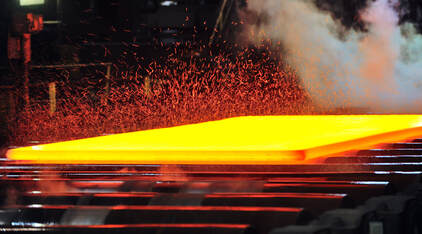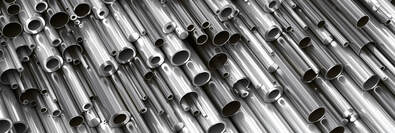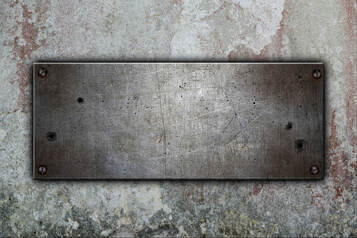 Fun Facts about Structural Steel and what you may not know! Steel is a rather diverse material, and we could spend years talking about the variety of uses and why and how it is made. However, just for fun today, let's talk about things you may not know. Steel is a low-carbon alloy typically made from tin, carbon and, of course, iron. Due to its ability to withstand heat, tremendous pressure and its corrosion resistance (chromium oxide, an inorganic compound), steel is prevalent in fabrication and across a myriad of industries. Did you know? Did you know that in the United States, more than 67 percent of steel is recycled every year! That is more than aluminum, plastic, aluminum, and glass combined. That accounts for approximately 80 million tons in the US alone. And, we all know that steel can withstand a great deal of weight because it is about 1,000 times stronger than iron in its purest state and that even when recycled it has no loss of strength. Steel is used in renewable energy – in hydro, solar, and wind power. And, did you know that since the 2nd World War, the steel industry in North America has reduced its energy use by as much as 60 percent and what that means is a reduction in the generation of carbon dioxide. Steel is the second largest industry in the world, after oil and gas, with close to a trillion-dollar turnover. It is used in nearly every sector from construction and housing (#1 use), packing and machinery, tankers, energy, and, in the automotive and transportation industry. After Japan and China, the United States is the third-largest producer of steel, and it employs more than two million people around the world, and it is increasing each year. Steel is used in the construction of bridges, but did you know that these bridges are four to eight times lighter than bridges made from concrete! The first skyscraper to use steel was built in 1884 in Chicago. But did you also know, that the Empire State Building is designed to be dissembled or assembled easily? And, because steel expands when heated, the Eiffel Tower is taller in summer than it is in winter! Most major appliances are made with steel, and with the increased demand for Stainless Steel appliances, we can see how popular and durable this material is. How about your computer, did you know that chips and other interior components are comprised of steel? In the United States alone, more than 600 cans of steel are recycled every second, and that by recycling just one can we save enough energy to power a lightbulb for four years (60-watt). Many of us rarely think about these things in our daily comings and goings. However, steel has versatility, sustainability, renewability, and contributes to the world in more ways than the economy. Steel is an essential part of how we build. Whether you are making a swing set or constructing a building, Spirit Metals can help! At Spirit, our goal is to understand the needs of your business, your project, and your budget. We partner with you to achieve those goals. Call us today at 813-444-2022 or email, and one of our dedicated team members will assist you!
21 Comments
 What is the difference between Pipe and Tubing? So what is the difference between pipe and tubing? And, if you need tubing, are you looking for ERW or DOM? Pipe and tubing specs vary, so it is essential to know the difference when ordering pipe versus tubing; but also, are you looking for ERW and DOM tube? Pipe versus Tubing A pipe has a variety of uses from plumbing to structural applications, but also bollards are made from pipe. Standard carbon steel pipe is offered in 20, 21, 40 and 42' lengths and ordered by the ID or inside diameter and wall thickness. Often referred to as black pipe, it can be galvanized or blasted and primed to specification. For example, if you need a 1-1/2” SCH40 pipe, your NPS (nominal pipe size) is always the OD which will be larger than the ID. In this example, your OD is 1.900”, your ID is 1.610” and the wall thickness will be 0.145 (or just over 9/64”). Tubing, on the other hand, is measured by the OD or outside diameter and wall thickness. So in the case of 1-1/2” OD, the wall thickness will be lighter, and your ID will be 1.232 (or just shy of 15/64”). Many structures will call for tubing versus pipe because tubing can cost less, be easier to install and maintain. Pipe and tubing are distinctly different in not just how and when they are used, but in how they are made. DOM tube or Drawn Over Mandrel If you are looking for DOM tube, Spirit Metals can help. DOM stands for Drawn Over Mandrel and refers to the process in which it is made. It is easily welded and fabricated, has a superior tensile and yield strength, and has limitless size possibilities. DOM tubing is a high-quality welded tube and is cold worked and drawn over mandrel to create dimensional accuracy and a smooth surface. The interior seam is removed to create a tube that has a uniform concentricity and wall thickness. This process allows for enhanced mechanical properties, and It is formed from SAE 1020 or 1026 steel; it has a composition of carbon, sulfur, manganese, and phosphorous. DOM tube is found in race cars and as roll bars in buggies, shift levers, hydraulic cylinders, auto and truck axles, as well as many other machining applications. When your plans call for a specific OD, you can be sure that tubing is what you need. ERW tube or Electric Resistance Welded ERW tubing is hot-rolled and refers to the specific process of welding that involves both seam and spot welding. Also, it will have a welded joint in the cross-section. It is easier to form, and the dimensions are not as uniform as it is with DOM tube. If you do not need DOM or seamless tube, this is a good option. There are many options to choose from when deciding between pipe and tubing, so like anything in this industry, it’s essential to know what is passing through the material (if anything) and what are the tolerance needs for your application. Pipe and tube are a regular part of our daily life, even if you cannot see it. Whatever your need, Spirit Metals can help! Our primary goal is to understand the needs of your business, your project, and your budget! We pride ourselves in partnering with our customers to achieve those goals. Call us today at 813-444-2022 or email us, and one of our dedicated team members will assist you!  What is the difference between standard A36, AR, and ABS Plate? Your project calls for steel plate, but when you call your supplier, they ask, "are you looking for A36, AR, or ABS plate?” Here we will discuss the differences and when your project may call for AR plate over ABS or standard plate. However, keep in mind there are various ASTM classifications. As always, it depends on the industry you are in and the application of the material. When in doubt always refer to your plans or the industry-specific standard. A36 Plate Most standard projects will call for A36 grade plate. It is used for base plates, stiffener plates, flanges, and other structural applications. From plate, you can cut to spec flat bar, or if you need a piece of angle and it isn’t offered, you can form it from plate to meet your needs. The most common applications are in commercial and standard construction. However, steel plate has a wide variety of applications outside of building such as marine and offshore equipment, pressure vessels, and military use. Plate thickness’ start at 3/16” and can go as thick as ten inches. Standard plate sizes that are 48" x 96" and 60" x 120". However, steel plate can be purchased in sizes as large as 120" x 480". At Spirit Metals, we work with the mills on all custom sizes to meet your project needs. Spirit Metals offers plates in all sizes and alloys, as needed. If you are looking for road plate, we can provide you with custom sizes and widths. Not sure, contact us today, and we are happy to do the leg work for you and provide a comprehensive quote. AR Plate Many people ask what is AR plate and why would I need that over the standard A36 or A572? AR plate is a high carbon alloy plate. AR stands for Abrasion Resistant and will come in designations like AR400 or AR500 and usually offered as-rolled versus normalized (AR 200, 235 and 600 are also available). When a project calls for AR plate, it is generally because of the length of wear on the plate is minimized. For instance, you would not need AR plate to create base plates at the bottom of a structural column. However, if you are building a gun range or want a piece of hardy steel plate for target practice, you will want the AR plates for their long wear and life cycle. In some cases, AR 500 plate is cut to spec and used in bulletproof vests, but you want to make sure that your material meets the safety standard requirements. The hardness range of AR400 plate is 360-440 BHN (Brinell Hardness), and AR500 has a BHN rating of 550. ABS Plate ABS plate is used quite explicitly in the maritime industry and is certified by the American Bureau of Shipyards. It is the material used in hulls, and other structural parts of a ship, in barges, offshore drilling platforms, and different types of marine equipment. It comes in a variety of grades including grades DH an AH, which are normalized to improve its rigor. It comes in thicknesses as thin as a ¼” and up to 3”, and standard sizes can be cut from larger stock sizes of 96” x 240” or 120” x 480”. Plate steel is a normal part of our world, it is found on roadway projects, or as supports to the structural steel in your home or business. Whatever your need, Spirit Metals can help! Our primary goal is to understand the needs of your business, your project, and your budget, and partner with you to achieve those goals. Call us today at 813-444-2022 or email, and one of our dedicated team members will assist you! |
AuthorWrite something about yourself. No need to be fancy, just an overview. Archives
September 2019
Categories |
|
